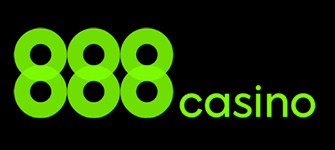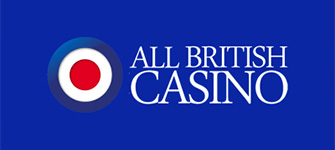Craps Strategy
Gambling aficionados who have chosen to play at a brick-and-mortar casino can easily discern the craps tables as most of the time, they are rowdy, and lots of enthusiastic yelling can be heard almost all through. Interestingly enough, craps now enjoys newfound popularity mainly because of the entertaining gameplay it boasts, and the lower advantage the house is given over players.
As likely as not, when you have first explored the betting layout of the craps table, you might have ended up stumped. At first glance, everything looks so intimidating and fast-paced that you could hardly make heads or tails of the game. In most cases, things start to fall into place once players bone up on the rules of the game.
There is no denying that craps is an exceptionally exciting game, but if players are looking to enjoy a profitable betting session, making use of a betting strategy might be the way to go.
- ✓ Things to Consider
- ✓ Best Craps Bets
- ✓ Pass Line and Come Bets
- ✓ Don’t Pass and Don’t Come Bets
- ✓ Lay Bets
- ✓ Placing 6 and 8
- ✓ Hedge Betting in Craps
- ✓ Iron Cross Strategy
- ✓ Which Craps Bets to Avoid
- ✓ Money Management
Things to Consider about Craps
One of the most important things casino enthusiasts need to remember about craps is that it is an entirely chance-based game. What this means is that the decisions they make cannot influence the way in which the next toss of the dice will end. Instead, the results are entirely random, and the chances of any dice combination to be shot in the next round remain exactly the same.
A large number of the wager types players can pick and choose from carry whopping house edge, thus putting players in not so advantageous position. Betting on craps without having made a plan ahead of time is likely to have a rather disruptive effect not only on your bankroll but on your overall gaming experience.
Yet, if you are looking to ensure that your craps betting session will not be fruitless, it is recommended to apply a betting system or strategy. No matter if they are about to begin playing craps online or at a land-based casino, gambling enthusiasts should make sure that they have a proper plan of action. One of the first things they need to make up their minds about is the bankroll they are willing to devote to their betting session. This is needed so that they could figure out if they can afford to utilize the preferred craps betting method.
Furthermore, casino enthusiasts need to decide on what goal they will be after during their betting session. More specifically, players should ask themselves if they prefer to enjoy a lengthier betting session during which they will attempt to grind out the profit they wish. Another alternative that might appeal to craps mavens are long shots during which they will snatch heftier payouts.
One more question players should answer is whether they prefer to bet the right way or they do not mind to opt for wrong betting.
Best Craps Bets
Even if you are a total novice at betting on craps, it is unlikely that the sheer profusion of betting opportunities has flown under your radar. Yet, if players are looking to guarantee better wins, they should be aware that opting for some wager types is likely to take them closer to the betting goals they have set than others, and this is so because of the difference in the house edge. In essence, while making up their minds about the wager type they will make, one of the things that should guide players’ decisions is the advantage the house will enjoy over them and of course, the payoffs they will be offered.
Pass Line and Come Bets
If you are looking to enhance your craps betting experience, one of the best things you can do is to stick to the Pass Line bet. In fact, while looking for a craps betting strategy, it might hit you that the bulk of them start precisely with this wager type because of its low house edge of 1.41%. As you might already know, when you start a new game, you will be required to lay a Pass Line or Don’t Pass bet, which is just the opposite.
With Pass Line bets, gambling enthusiasts wager that a 7 or 11 will be tossed out before any of the craps numbers land. As soon as a point is established, Pass Line bettors will be provided with a payout, given that the appearance of the point number goes before the appearance of a 7. The Don’t Pass bet is the exact opposite, which means that such wagers win when a 2, 3, or 12 lands and lose when a 7 or 11 is thrown. Pass Line and Don’t Pass bets come with rather advantageous odds, and when they are winning ones, they pay out even money.
Another thing craps players should be mindful of is that the house will enjoy the same edge also when they opt for a Come bet. In practice, Pass Line and Come bets are wager types that work in a likewise fashion, and the only difference between them is the point at which they can be laid. As mentioned above, Pass Line bets are made when the game starts, while Come bets can only be made if a point is already established.
Furthermore, craps players can easily turn things into their account simply by taking Odds on their Pass Line or Come bet. Opting for this additional wager will be instrumental in reducing the edge of the house as when gambling enthusiasts go for single odds, the advantage of the house will shrink to 0.8%. The house edge declines to 0.6% with x3 and x4 odds, which comes to explain why this extra bet is worth considering. If you are looking to lessen the built-in house advantage further, going for x5 or x100 odds is the way to go as in such cases, it is almost non-existent.
Most casino enthusiasts who prefer to bet on craps using this approach will normally place a Pass Line bet, and will then lay two or sometimes, even three Come bets, thus increasing the quantity of the working numbers.
Thus, if we assume that a new game starts, you will be prompted to opt for a Pass Line bet, and wait to see if a decision will be made immediately or the game will enter its second phase. In the event that there is a pass line point, craps bettors will be enabled to go for a Come bet, thus including yet another number. What is worth taking into consideration about Odds bets is that players will be entitled to take them down, expand, or decrease their value whenever they feel like it.
As likely as not, the question that arises now is how to determine the amount you should put on the line when taking the Odds. It is recommended to stake an amount you are comfortable with, and which corresponds to the bankroll you have initially set. What is advised, however, is to allocate as a big amount as possible to your Odds bet because of the lack of house edge. What players should consider doing is placing a Pass Line or Come bet sticking to the table minimums, and then attaining the preferred amount simply by wagering the rest on the Odds bet.
No matter that the edge of the house is so dramatically reduced, players should make sure that they will not stake more than they can afford as such an approach is likely to have a detrimental influence on their bankroll.
Don’t Pass and Don’t Come Bets
Some craps lovers prefer to proceed towards their betting session in a slightly different fashion and to stick to betting the wrong way, or to bet against the shooter making a point. The reason why players should not cross out Don’t Pass and Don’t Come bets is that when placing them, the house has an advantage of 1.36%, which renders them a bit better than Pass Line and Come bets. When opting for these wager types, casino enthusiasts bet that a 7 or 11 will not be thrown on the come-out roll or that the appearance of the 7 will forego the shooting of the point number.
Much like with Pass Line and Come bets, the only difference between Don’t Pass and Don’t Come bets is once again the point at which they are wrapped up. Both of the bet types are multi-shot bets, which means that they might be settled within several shots of the dice. While Don’t Pass bets are laid prior to the initial toss of the dice, Don’t Come bets will be at players’ fingertips, as soon as a point is established. When the payoffs are concerned, they are also identical with the payoffs players are offered when placing Pass Line and Come bets.
Fortunately, players are given the opportunity to reduce the advantage of the house further by laying the odds. Doing so will shrink the house advantage to 0.7% with single odds. It will be reduced to 0.5% with double odds, 0.3% with x3 and x4 odds, and 0.2% with x5 odds. With x10 odds, it will stand at 0.1%, while with x100 odds, it will be 0.01%.
It is a common occurrence that while playing craps at a brick-and-mortar casino, gambling enthusiasts prefer betting with the shooter or the right way for the simple reason that they want to be part of the camaraderie when the shooter has made a winning wager. Yet, if you prefer to play craps online, you will not need to reckon with the way other players have decided to play, thus having the freedom to bet the wrong way whenever you wish.
One of the main reasons why craps players should consider incorporating Don’t Pass and Don’t Come bets into their betting strategy is that these wager types will provide the lowest house edge, given that players decide to lay the odds.
Yet, what is worth considering is that even if players have initially set their wagers at the table minimum, the staked amount can quickly grow. For that reason, before they opt for these bets, gambling enthusiasts should check out if this approach is compatible with their bankroll.
Lay Bets
If gambling enthusiasts already have a firm understanding of the different bet types that are available at the craps table, they might be aware that Lay and Place bets have much in common. As for Place bets, they give players the opportunity to pick any of the place numbers, and to bet that the preferred number will be thrown before a combination that results in a 7 is thrown. Lay bets, on the other hand, give players the chance to bet that the appearance of the 7 will forerun the appearance of the chosen number. The numbers craps players can settle on include 4, 5,6, 8, 9, and 10. Going for this wager type is possible at any time, and even if a point number is already picked. Winning Lay bets pay even money, but what is worth taking into account is the commission of 5% that will be applied to the amount players have won.
As players might expect, the edge the house has is not the same with all the above-mentioned numbers. To enjoy the lowest house edge, players will need to bet either on 4 or on 10 as in such cases, it stands at 1.67%. Betting on 5 or 9 will give the house an edge of 2%, while wagering on 6 or 8 makes for a house advantage of 2.27%.
Therefore, the strategy craps lovers can apply in such cases is to opt for a Lay bet and pick either 4 or 10 as that way, they will be able to keep the advantage of the casino rather low.
The benefit of betting this way is that casino enthusiasts are enabled to pick the most infrequent numbers that allow wrong bettors to snatch payouts more times. What is even better is that they are saved the hassle of going over the come-out roll.
In terms of the wagered amount, when players lay these numbers, the staked amount can be less in comparison with a Don’t Pass and Don’t Come bets with laid odds. Yet, gambling enthusiasts should not overlook the fact that the edge of the house remains higher when compared to the above-mentioned wager types.
Placing 6 and 8
Interestingly enough, this remains one of the most well-preferred strategies craps players prefer to stick to as thanks to it, they will have the opportunity to decide on the numbers they wish, without waiting for a point number to be established.
As gambling enthusiasts might already be aware, 7 is the total that hits most frequently simply because the combinations that produce it are the most abundant. The other two totals that are rolled out rather frequently are 6 and 8. With these two numbers, the edge of the house is rather low as it stands at 1.52%. In spite of the fact that the edge of the house goes higher than with Pass Line, Don’t Pass, Come and Don’t Come bets, if you opt for Placing 6 and 8, you will be in a more advantageous position than when you go for most of the other bet types the craps table features.
In the event that gambling aficionados want to opt for this approach, they should make sure that the wagers they will lay will be in multiples of $6. The reason why most craps players prefer to incorporate this approach into their betting session is that it allows them to risk smaller amounts of money, which is not the case with most other craps strategies.
Thus, if we presume that the least amount you are permitted to stake at the table you have joined is $6, this means that ultimately, the staked amount will be $12 at a time. Still, what is worth noting, however, is that when placing such a wager, gambling enthusiasts will not be able to take odds, which means that the option to take the edge off will be unavailable.
Another approach that can help craps players to enhance their performance is to opt for a combination of a Pass Line bet with laid odds and Placing 6 and 8. This is something like a mixed-breed betting strategy you might find particularly useful, especially if you are short-budgeted.
What gambling enthusiasts need to do is to lay a Pass Line bet that corresponds to the table betting minimums. In the event that a point has already been established, craps lovers will need to take Odds on their Pass Line bet. Needless to say, they should make sure that the amount they will put on the line when going for this additional wager should be consistent with their bankroll, and will not eat up too much of it.
What is specific about this betting strategy is that if the established point number is either 6 or 8, the next step is to lay a Place bet on the other number. Yet, if a point is already established, and another total was rolled out, what players will be required to do is to make a Place bet on both of these totals.
Going for this craps betting strategy will put players in a more advantageous position because of the reduced house edge. Furthermore, two of the totals that land most frequently will be working as well, thus enhancing your chances to bag a payout.
Hedge Betting in Craps
Every player who is well-versed in wagering on craps is aware that hedge betting remains one of the most common tactics lovers of the game resort to. This is anything but surprising due to the fact that every wager gambling enthusiasts make has a specific deficiency, and hedge bets can help them cope with that weakness.
In essence, when casino enthusiasts go for hedge betting, they will get a profit that is guaranteed by betting on another outcome or outcomes, thus making an additional wager to the bet they have originally made. In this way, craps players are given the opportunity to offset the inherent risks, and to get paid even if the wager they have initially made is settled as a losing one. Simply put, the core principle of hedge betting is to prevent players from suffering losses of larger amounts.
As it turns out, most lovers of that casino game tend to hedge their Pass Line wagers with an Any Craps bet. For starters, when you make an Any Craps wager, you bet that the shooter will throw any of the craps numbers or 2, 3, and 12. If any of the other totals come out, it will become a point, and Any Craps bets will be settled as winning ones, provided that the appearance of that number foreruns the emergence of a 7.
Most of the time, such hedge bets are made during the initial toss of the dice or the come-out roll. Now, if we assume that you want to put hedge betting through its paces, and you make a $5 Pass Line bet and a $1 Any Craps bet. In the event that a 7 or 11 are shot next, players will be provided with a payout of $5 for their Pass Line bet, and will need to part with the amount they staked on their Any Craps bet. What this means is that the profit they will ultimately get will be $5.
If any of the craps numbers are thrown, however, gambling enthusiasts will get a payout of $7 for their Any Craps bet, while their Pass Line bet will be resolved as a losing one, which means that the $5 they have staked will be collected by the casino. In this scenario, the profit players will be introduced with will be $2.
Perhaps, at this point, players might wonder how the gameplay will pan out if any of the point numbers are tossed out. In the event that a 4, 5, 6, 8, 9, or 10 is tossed out, your Any Craps bet will be settled as a losing one right away, while your Pass Line bet will continue to the standing, which means that its outcome will be determined within the next shots of the dice.
Something essential players should take into account is that if they make a $5 Pass Line wager, together with a $1 Any Craps bet, the average amount they should expect to win per 36 come-out rolls should be approximately $16.
Now, let’s assume that hedge betting does not seem like a good idea to you, and instead, you would rather make a $5 Pass Line wager. Since there are a total of eight combinations that will result in a win and four losing combinations, the average amount players can potentially walk away with is $20. That way, it becomes clear that going for hedge betting will bring you smaller payouts than simply going for a Pass Line bet. The main reason why this betting tactic might not live up to the expectations of players is that going for the Any Craps bet will give the casino an advantage of 11.11%, which will cause them to lose more frequently.
As it seems, some craps lovers prefer to hedge Place bets with an Any 7 bet. As for Any 7 bets, it takes a single shot of the dice for their outcome to be resolved, and a payout of 4:1 will be provided for winning such bets. As we already mentioned, the outcome of Place bets is resolved within several shots of the dice. They provide a payout if the number you have chosen lands, and lose if a 7 is tossed out. If any other total is thrown, the wager will remain in action and will be resolved within the next few shots of the dice.
Let’s suppose that you have made a $6 Place bet on 6 and a $2 Any 7 bet. If a 6 is thrown on the next toss of the dice, you will be offered a payout of $7 for your Place bet, while your Any 7 bet will be resolved as a losing one, which will cost you $2. Ultimately, your profit will be $5. Now, if we suppose that a 7 is thrown, this will make for a payout of $8 for your Any 7 bet, and you will lose the $6 you have staked for your Place bet, thus making for an overall profit of $2.
Yet, what players should take into consideration is that 25 rolls will not result in a win for their Any 7 bet or the Place bet they have made on 6. What this means is that per every 36 rolls of the dice, players will need to part with $13.
If players have not opted for hedge betting, their overall losses per 36 tosses of the dice will be only $1 as they will be paid out per $7 whenever one of the place numbers shows up, which results in a total payout of $35. Players’ losses will be worth $36 because they will need to part with $6 when a 7 shows, which will happen 6 times.
Iron Cross Strategy
The iron cross strategy is also a particularly interesting way of approaching the game, and it is a hit-and-run strategy for craps betting. This strategy is all about covering as many numbers as possible, and if a win is scored on the next roll, to take down the wagers laid on the remaining numbers. Something important craps players should be aware of is that if they decide to give this strategy a shot, they will need to cover all numbers bar the 7. Initially, they will start by handling a Field bet that comprises 2, 3, 4, 9, 10, 11, and 12. In addition to this, they should not forget to opt for Place bets that cover 5, 6, and 8.
In this way, there will be 30 ways to score a win against 6 ways in which you will lose. When Field bets are concerned, most of the time, casino enthusiasts should expect to get even money. The only exceptions are 2 and 12 as on some occasions, the payout casino enthusiasts should expect to get is 2:1. As for Place bets, when they are made on the 5, craps mavens will be paid out 7:5, while wagers on 6 and 8 pay 7:6.
Let’s presume that you have staked per $5 for the Place bet on the 5 and the Field bet, and per $6 for the Place bets that are made on 6 and 8. A payoff of $15 will be given, provided that a 12 is thrown on the next roll, $10 if 2 lands, and $7 if 8, 6, or 5 lands, and $5 if any of the other totals shows up. Yet, if a 7 is tossed out, players will need to part with the entire investment they have made.
Which Craps Bets to Steer Clear of
As long as players already have at least basic knowledge of craps, perhaps, they are aware that certain wager types should be avoided simply because of the outrageous edge they give the casino. Wagers that come with a higher house edge are not that frequent winners, but when they are resolved as winning ones, the payoffs are heftier.
Most of the time, experienced craps players will advise against the bets that are featured in the central section of the craps table precisely because the advantage of the house is boosted significantly.
The wager types craps players, especially the ones that lack experience should avoid include Any 7, Betting on 2 and 12, Whirl bets, Horn bets, Yo-leven bet, High-lo bet, Hard 4 and Hard 10, Hard 6 and Hard 8, Place bets on 4 and 10, Lay 6 or Lay 8, Place 5 or 9, and Buy 5 or 9.
In spite of the fact that if you go repeatedly for these wager types, this is likely to have a detrimental effect on your bankroll, if they are incorporated into a proper betting strategy, they can help you enhance of performance.
Craps Money Management
Becoming a successful craps player can seem rather hard, especially considering the breakneck pace of the game and the staggering number of betting opportunities. In spite of the fact that handling your finances properly while playing craps can be a bit more challenging when compared to games such as blackjack or roulette, it is a must for players to learn more about budgeting.
First and foremost, gambling enthusiasts should make sure that they have established a budget. This refers to playing craps online and at brick-and-mortar casinos and involves determining the maximum amount craps lovers will play with. Doing so is vital because once you have reached that predetermined amount, you will need to stop betting. Furthermore, they should also decide on the ceiling on their individual bets. While defining your craps betting budget, you should simply ask yourself what amount you will be comfortable to lose. Enhancing your performance should not go without setting a winning goal as well.
Another thing casino enthusiasts can do so as to enhance their performance is to start making bets that are consistent with the table minimums. In this way, players will be able to get used to the pace of the game and will make sure that their craps playtime will be prolonged. Needless to say, the smaller the size of your wagers is, the longer you will be able to stay at the craps table and enjoy the dice game.
An approach that can be rather useful when defining your budget is to allocate several session bankrolls. In other words, casino enthusiasts will need to split the entire amount that is destined to their gambling adventures into several parts that are determined by the limits of the particular craps table and their individual preferences.
Successful craps money management involves excluding progressive betting systems and proposition bets out of the equation. Making use of betting systems or going for any of the prop bets is unlikely to be of much use simply because players are most likely to end up with zeroed bankrolls at the twinkling of an eye.
When playing at land-based casinos, it might be slightly easier for players to trick themselves to handle their finances properly. One way to attain this is not to spend your entire craps budget on chips at once, and instead to buy chips in several phases. In this way, players will be able to slow down the pace at which they wager and to be more careful with the stakes they make. While playing online, however, casino enthusiasts should consider deciding on the intervals on which they will pause their betting session. In this way, they will be less prone to be inconsiderate to the bet types they pick and the amounts they wager.


 PlayOJO Casino
PlayOJO Casino 888casino
888casino All British Casino
All British Casino Casino Action
Casino Action UK Casino Club
UK Casino Club